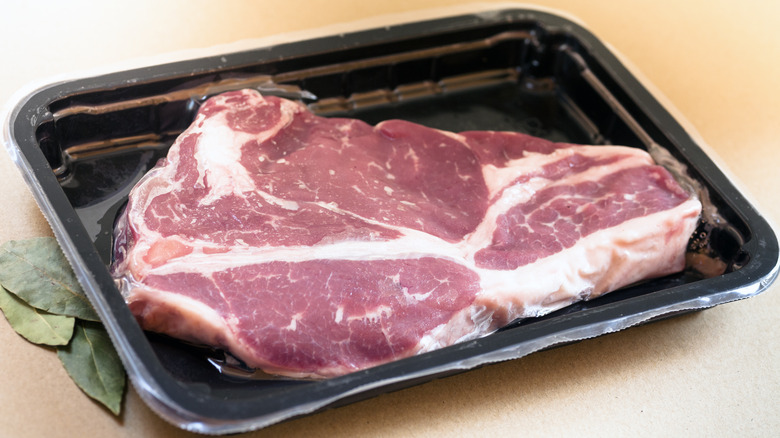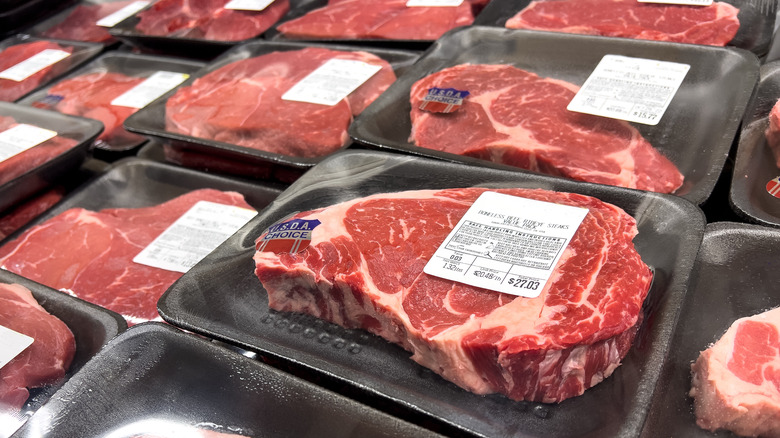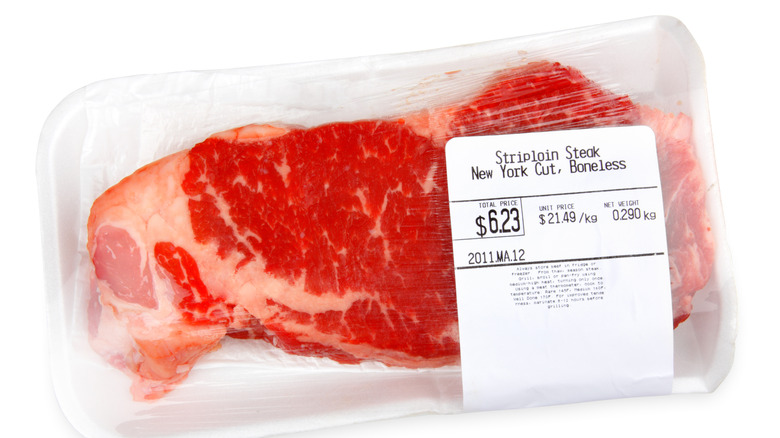The Tell-Tale Sign That Grocery Store Meat Has Been Stored Improperly
There may be nothing in the world more disgusting than meat that's gone bad, in terms of taste, texture, and just general smell. Most times, meat will go bad because you left it in your fridge too long or you stored the meat improperly. If you've ever caused your proteins to expire, you know the frustration of looking in the fridge and realizing meat's no longer on the menu. But sometimes, it has nothing to do with anything you did. It's already bad from the jump, because the store from which you purchased it has goofed. The single easiest way to spot whether your meat has had packaging issues is to check the liquid level of the package.
Whether this is from improper storage procedures or accidental damage during the packaging and transport process, it's never a good thing to buy meat and discover it's not good any more. But how can you tell whether what you're buying is still on the up and up? It turns out that there's one very easy to way to spot if there's a problem, and it comes from answering the question "what's going on with the meat juice situation?"
Excessive juice can be a sign of all sorts of issues
Meat will often express a red juice in the time it takes for it to go from a cow to your grocery store shelf. This is not in and of itself necessarily a bad thing; people assume that liquid is blood, but it's actually just a mixture of water and myoglobin. Some of it is inevitable — but too much isn't a good thing. Meat will express more of that stuff the more it's been exposed to oxygen (meaning it's often been out longer than it should), and oxygen is the enemy of freshness.
Not only does excess juice mean the meat is likely older, but that juice can also be a breeding ground for bacteria, such as salmonella and e. coli. That's why packages of meat come with that absorbent pad — it sops up the liquid that's leaked out of the meat and keeps it from creating a stagnant, bacterial mess.
There are all sorts of ways to tell if packaged meat is suspect
Obviously, there are other easy ways to spot whether your meat purchase is past prime, too. If your steak is brown or your chicken is green, that's a pretty good indication you shouldn't be spending your hard-earned money for it. If the package is damaged, the whole endeavor is right out, because you have no idea what's happened to it. And if you can smell it through the packaging, not only should you not buy it, but you should really find another grocery store entirely.
Shopping for food is like cooking in that you have to respect the rules of the process. If you buy bad ingredients, you're going to create a bad end product. As long as you follow the rules and know what to look for, though, you shouldn't have to worry about whether your protein is past its prime.


